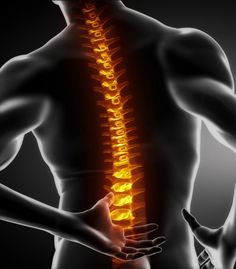How to Manage Back Pain from Strained Muscles Effectively
Back pain caused by strained muscles is a common issue that affects people of all ages; understanding the “Steps to Alleviate Back Pain from Muscle Strain“ is essential, as it can result from overexertion, poor posture, or sudden movements, often limiting mobility and daily activities. While muscle strains can range in severity, taking the right steps to manage back pain effectively can lead to quicker recovery and a better quality of life. This comprehensive guide explores proven methods to alleviate discomfort, promote healing, and prevent future strains.
Understanding Muscle Strains in the Back
Muscle strains occur when muscle fibers are stretched beyond their capacity, leading to small tears. Common causes include:
- Lifting heavy objects improperly.
- Repetitive motion or overuse.
- Sudden twisting or bending movements.
- Prolonged sitting or poor posture.
Symptoms of a muscle strain may include localized pain, stiffness, muscle spasms, and limited range of motion. Recognizing these signs early allows for timely intervention.
Step 1: Rest and Avoid Aggravating Activities
Rest is the first and most crucial step in managing back pain from strained muscles. Giving your back adequate time to recover minimizes further strain and inflammation.
Tips for Resting Effectively:
- Limit activity: Avoid heavy lifting, bending, or twisting until the pain subsides.
- Maintain good posture: Whether sitting or lying down, support your back with pillows to ensure proper spinal alignment.
- Alternate positions: Avoid prolonged periods in one position to reduce stiffness.
Avoid Complete Immobilization:
Extended bed rest can weaken muscles and slow recovery. Engage in gentle movements, such as short walks, to maintain circulation and prevent stiffness.
Step 2: Apply Ice and Heat Therapy
Using ice and heat therapy can significantly reduce pain and promote healing. Each has its unique benefits depending on the stage of the injury.
Ice Therapy:
- When to Use: Within the first 48 hours after the injury to reduce inflammation and numb pain.
- How to Apply:
- Wrap an ice pack or frozen bag of vegetables in a cloth.
- Apply to the affected area for 15-20 minutes.
- Repeat every 2-3 hours.
Heat Therapy:
- When to Use: After 48 hours, once inflammation has subsided.
- How to Apply:
- Use a heating pad or hot water bottle wrapped in a towel.
- Apply for 20-30 minutes.
- Ensure the temperature is comfortable to avoid burns.
Alternating between ice and heat may offer additional relief by combining their pain-relieving and muscle-relaxing properties.
Step 3: Use Over-the-Counter Pain Relievers
Over-the-counter (OTC) medications can provide temporary relief from pain and inflammation, allowing you to move more comfortably.
Common Options:
- Nonsteroidal Anti-Inflammatory Drugs (NSAIDs): Ibuprofen and naproxen reduce inflammation and alleviate pain.
- Acetaminophen: This option focuses on pain relief without targeting inflammation.
Guidelines for Use:
- Follow the dosage instructions on the label.
- Avoid combining medications without consulting a healthcare provider.
- Use only as needed to prevent dependency or side effects.
Step 4: Perform Gentle Stretches and Exercises
Once initial pain subsides, gentle stretching and exercises can help restore flexibility, improve circulation, and strengthen the back muscles. Always proceed cautiously to avoid exacerbating the injury.
Effective Stretches:
- Knee-to-Chest Stretch:
- Lie on your back with knees bent.
- Bring one knee toward your chest and hold for 20-30 seconds.
- Switch legs and repeat.
- Cat-Cow Stretch:
- Start on all fours.
- Arch your back upward (cat pose), then dip it downward (cow pose).
- Repeat slowly 8-10 times.
- Pelvic Tilts:
- Lie on your back with knees bent and feet flat on the floor.
- Tighten your abdominal muscles and tilt your pelvis upward.
- Hold for a few seconds, then release.
Low-Impact Exercises:
- Walking or swimming can improve blood flow and promote healing without straining the back.
- Yoga or Pilates classes designed for beginners can enhance flexibility and core strength.
Step 5: Maintain Proper Posture and Ergonomics
Poor posture often contributes to back pain. Adopting good posture habits can alleviate strain on the muscles and prevent further injuries.
Sitting Posture:
- Sit with your back straight and shoulders relaxed.
- Keep your feet flat on the floor.
- Use a chair with lumbar support or place a small pillow behind your lower back.
Standing Posture:
- Distribute your weight evenly between both feet.
- Keep your head aligned with your shoulders and hips.
- Avoid slouching or leaning to one side.
Lifting Technique:
- Bend at the knees, not the waist, when lifting objects.
- Hold the object close to your body.
- Avoid twisting while lifting.
Step 6: Explore Alternative Therapies
For individuals seeking additional relief, alternative therapies can complement traditional methods. These treatments are often used to manage chronic or recurring back pain.
Popular Options:
- Massage Therapy:
- Reduces muscle tension and improves circulation.
- Promotes relaxation and reduces stress.
- Chiropractic Care:
- Involves spinal adjustments to improve alignment and relieve pressure on muscles and nerves.
- Seek a licensed chiropractor for treatment.
- Acupuncture:
- Stimulates specific points on the body to reduce pain and inflammation.
- Consult a certified acupuncturist for best results.
- Physical Therapy:
- A physical therapist can create a customized exercise program to strengthen the back and improve mobility.
Step 7: Strengthen the Back and Core Muscles
Strengthening the muscles that support your spine is essential for long-term back health. Incorporate exercises that target your core and back muscles into your routine.
Strengthening Exercises:
- Plank:
- Lie face down, then lift your body onto your forearms and toes.
- Keep your body in a straight line and hold for 20-30 seconds.
- Bird-Dog Exercise:
- Start on all fours.
- Extend one arm and the opposite leg straight out.
- Hold for a few seconds, then switch sides.
- Superman Pose:
- Lie face down with arms extended in front of you.
- Lift your chest, arms, and legs off the ground simultaneously.
- Hold for a few seconds and release.
Consistency Is Key:
Perform these exercises 2-3 times a week to build strength and prevent future injuries. Always warm up before exercising and cool down afterward.
Step 8: Seek Medical Attention When Necessary
While most muscle strains heal with at-home care, certain situations require professional evaluation and treatment.
When to See a Doctor:
- Pain persists or worsens after a week of self-care.
- Numbness, tingling, or weakness accompanies the pain.
- The injury results from a fall or trauma.
- You experience difficulty moving or bearing weight.
Medical Treatment Options:
- Prescription pain relievers or muscle relaxants.
- Physical therapy to address specific movement issues.
- Diagnostic imaging (e.g., X-rays or MRI) to rule out underlying conditions.
Preventing Future Strains
Preventing back pain is often easier than treating it. Adopt these proactive measures to protect your back:
- Exercise Regularly: Engage in activities that strengthen your core and back muscles, such as yoga, Pilates, or weight training.
- Maintain a Healthy Weight: Excess weight can strain your back muscles and joints.
- Practice Good Posture: Be mindful of your posture when sitting, standing, and sleeping.
- Use Ergonomic Equipment: Invest in chairs, desks, and mattresses designed to support spinal health.
- Warm Up Before Physical Activity: Always stretch and prepare your muscles before exercising or engaging in strenuous tasks.
Conclusion
Managing back pain from strained muscles involves a combination of rest, targeted therapies, and preventative measures. By following these steps, you can alleviate pain, promote healing, and reduce the risk of future injuries. If the pain persists or worsens, consult a healthcare provider to ensure proper diagnosis and treatment. Taking a proactive approach to back health will not only help you recover faster but also improve your overall well-being.




